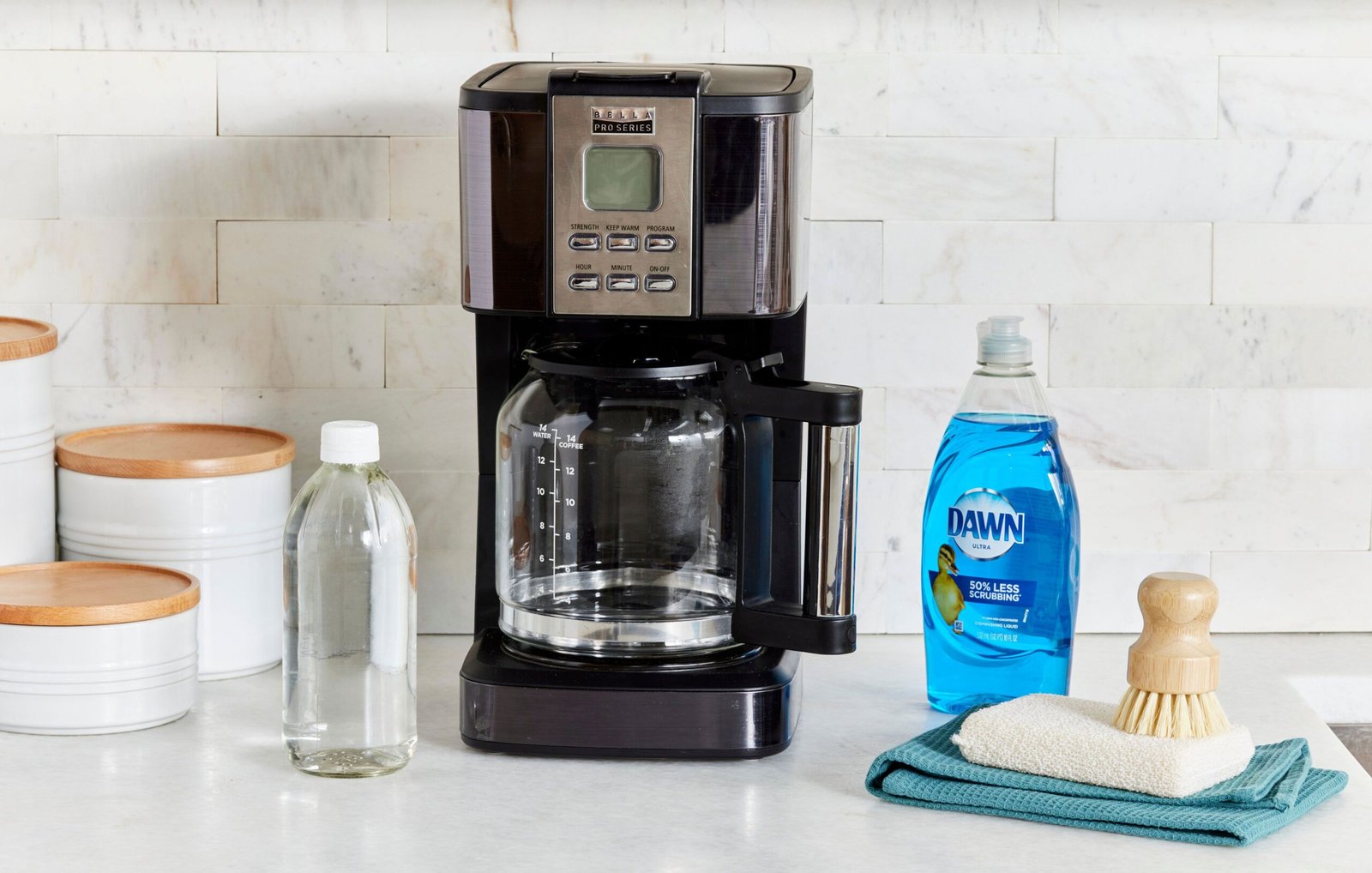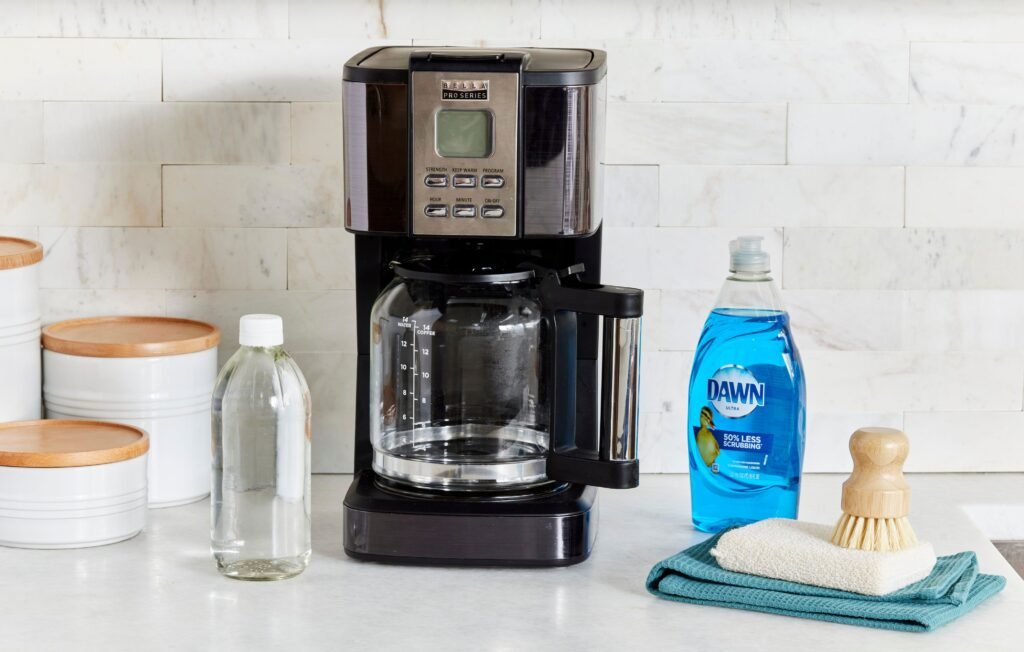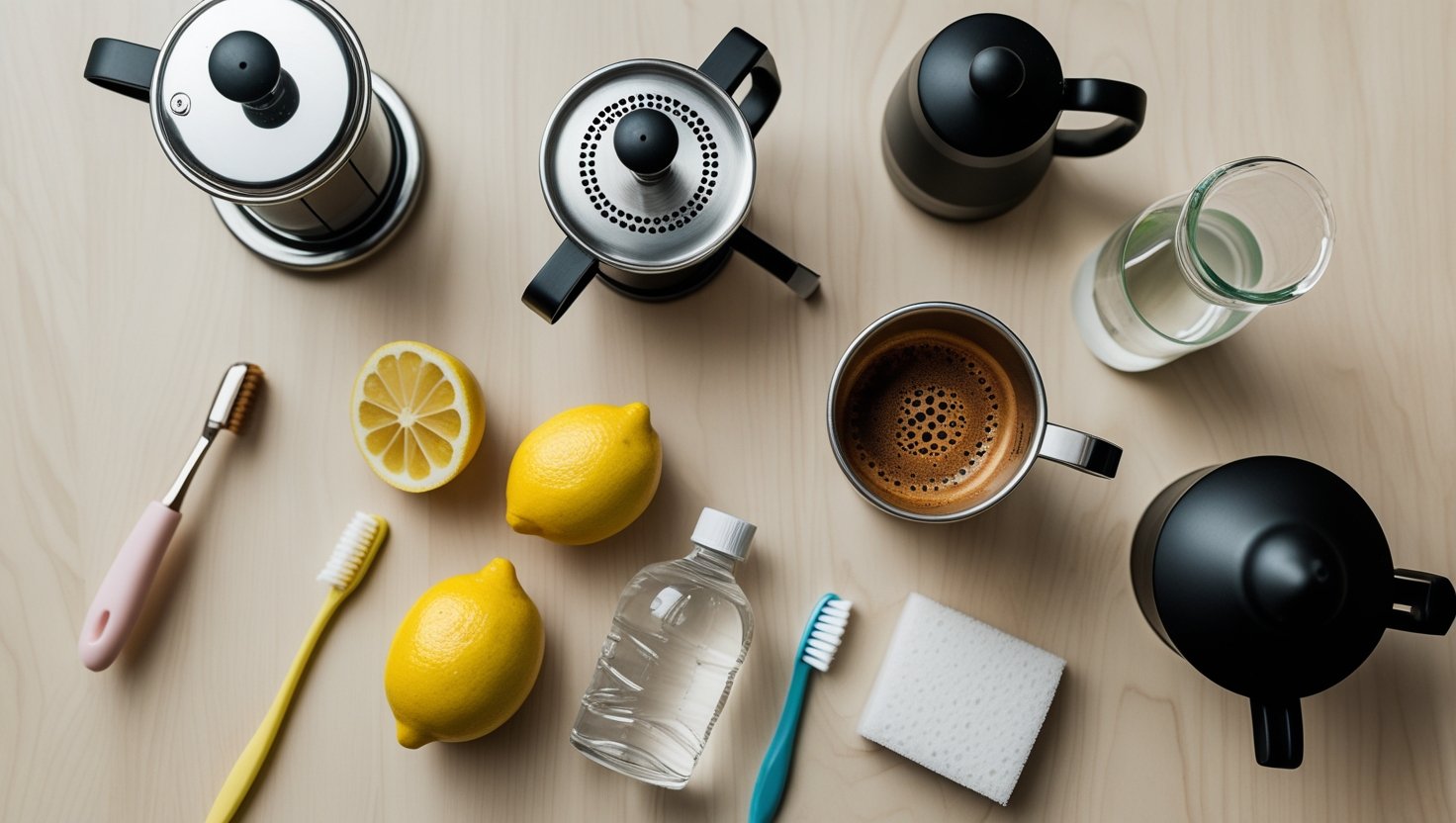How to Clean Your Coffee Maker
A No-Fuss Guide to Better Brews

It Started With a Bad Cup of Coffee
I still remember the cup that ruined my morning. Same beans. Same water. Same process. But the taste? Sour, musty, and somehow metallic.
That’s when it hit me: I hadn’t cleaned my coffee maker in weeks.
And I wasn’t alone. A lot of people don’t realize how quickly coffee oils, hard water minerals, and even mold can build up inside their beloved brewers. It doesn’t just affect flavor — it can also pose a health risk.
Whether you use a drip machine, a single-serve pod brewer, or even a classic French press, cleaning your coffee equipment is essential. The good news? It’s easier than you think. Let’s break it down.
Why Cleaning Your Coffee Maker Actually Matters
Let’s talk about what’s really happening inside your machine.
1. Better Taste
Even high-quality beans will taste dull or bitter if brewed in a dirty machine. Old coffee oils go rancid and cling to surfaces, messing up your flavor profile.
2. Avoid Health Hazards
A 2011 study by NSF International found that coffee reservoirs are among the top five germiest places in the home. Bacteria, mold, and yeast can thrive in warm, moist areas — especially if you don’t empty and rinse the water tank daily.
3. Improve Machine Lifespan
Hard water deposits (limescale) and coffee residue can clog your machine, making it work harder and wear out faster.
4. Faster Brewing Times
Mineral buildup can slow water flow, resulting in sluggish brew cycles. A clean machine runs more efficiently.
What You’ll Need
You don’t need any fancy gear. Most people can clean a coffee maker with these basic items:
-
White distilled vinegar or lemon juice
-
Water
-
Dish soap
-
Sponge or microfiber cloth
-
Toothbrush or bottle brush
-
Optional: Baking soda, citric acid
How Often Should You Clean It?
To keep things simple, here’s a schedule you can follow:
| Task | Frequency |
|---|---|
| Quick rinse & wipe | Daily |
| Deep clean with vinegar | Weekly |
| Descaling (hard water areas) | Monthly |
| Replace water filters | Every 60–90 days |
| Replace reusable filters | Yearly (if needed) |
Daily Cleaning Routine
Let’s start with the basics. After every brew:
-
Dump the Grounds: Always empty the basket right after brewing.
-
Rinse Components: Rinse the carafe, filter basket, and lid under warm water.
-
Wipe Exterior: Use a damp cloth to wipe the outside of the machine, especially the buttons and spout.
-
Dry Everything: Air-dry or towel-dry removable parts before putting them back.
This quick habit prevents mold, mildew, and lingering coffee residue from building up.
Weekly Deep Clean (Step-by-Step)
This is your all-in-one method to remove gunk, descale buildup, and kill bacteria.
🔹 Step 1: Empty the Coffee Maker
Remove the filter and dump any leftover grounds. Make sure the reservoir is empty.
🔹 Step 2: Mix Your Cleaning Solution
Use one of the following:
-
White vinegar + water: 1:1 ratio
-
Lemon juice + water: 1:1 ratio
-
Citric acid + water: 1 tablespoon per 4 cups of water
Pour this into the water reservoir.
🔹 Step 3: Run a Half Brew Cycle
Start the brew cycle. Midway through, pause the machine (or turn it off if needed). Let the solution sit inside for 30 minutes. This breaks down buildup in the tubes and water lines.
🔹 Step 4: Finish the Cycle
Turn it back on and let the rest of the solution brew through completely.
🔹 Step 5: Rinse With Fresh Water
Discard the vinegar mixture. Fill the reservoir with clean water and run two full brew cycles to remove any leftover taste or smell.
How to Clean Specific Parts
💧 Carafe or Pot
-
Fill with hot water and dish soap.
-
Add a spoon of rice and swirl (acts as a gentle abrasive).
-
Rinse thoroughly and air dry.
🧺 Filter Basket
-
Remove and soak in hot soapy water for 15 minutes.
-
Scrub with a soft brush or toothbrush.
-
Rinse and dry before placing back.
🪥 Showerhead & Nozzle
-
Wipe with a damp cloth.
-
Use a toothbrush to scrub buildup.
-
If removable, soak in vinegar for 15 minutes before rinsing.
🔌 Water Reservoir (if removable)
-
Wipe with a sponge soaked in vinegar or lemon juice.
-
Rinse well and let it air dry upside down.
Cleaning Other Types of Coffee Makers
☕ Drip Machines
Most home coffee machines like Mr. Coffee or Braun are cleaned exactly as outlined above.
Tip: If your machine has a cleaning cycle button, use it after adding the vinegar solution.
🥤 Single-Serve Pod Machines (Keurig, Nespresso)
For Keurig:
-
Unplug and remove pod holder, reservoir, and drip tray.
-
Clean each part with warm soapy water.
-
Use paperclip to unclog needle where water flows out.
-
Add vinegar solution to reservoir and run a brew cycle without a pod.
-
Rinse with 2–3 cycles of fresh water.
For Nespresso:
-
Most machines have built-in descaling mode (check manual).
-
Use citric acid or vinegar solution.
-
Rinse thoroughly and run water cycles until clear.
🫖 French Press
-
Disassemble the plunger and filter.
-
Rinse all parts with hot water.
-
Use dish soap and a soft sponge for the carafe.
-
Deep clean metal filter with baking soda and a toothbrush.
-
Let everything air dry before reassembling.
Tip: Avoid putting metal filters in the dishwasher—they bend easily.
⚙️ Espresso Machines
Espresso machines require more care, but here’s a basic routine:
-
Backflush (if machine allows): Use a blind portafilter and backflush detergent weekly.
-
Clean Portafilter & Baskets: Soak in soapy water after each session.
-
Descale: Use citric acid every 1–3 months, depending on water hardness.
-
Steam Wand: Wipe after every use and purge steam to remove milk residue.
Natural Alternatives to Vinegar
Hate the smell of vinegar? Try these:
-
Citric Acid: Odorless and food-safe. Great for descaling.
-
Baking Soda: Mild abrasive for scrubbing carafes and parts.
-
Lemon Juice: Natural acid + antibacterial, just strain pulp before use.
-
Hydrogen Peroxide (3%): Kills bacteria but rinse thoroughly before use.
What NOT to Use
-
Bleach (too harsh and risky if residue remains)
-
Abrasive pads (can scratch plastic or metal)
-
Dishwasher (can warp parts unless labeled dishwasher-safe)
Pro Tips to Keep It Clean Longer
-
Use filtered water to reduce mineral buildup
-
Empty and dry the water tank daily
-
Leave the lid open after use to prevent mold
-
Wipe the hot plate weekly to avoid burnt coffee residue
-
Keep your coffee maker in a well-ventilated spot away from direct sunlight
One Time, One Solution: Why It Matters
At Coffea Alchemy, we believe a great cup of coffee starts with clean tools. No single-origin bean or artisan roast can shine through dirty lines and stale buildup.
If you’re spending $15–$30 a month on beans, it only makes sense to protect that investment with proper upkeep. And the best part? You don’t need to buy anything new. Just vinegar, water, and consistency.
Final Thoughts: Your Clean Machine Awaits
Brewing coffee is part science, part ritual. But like all rituals, it depends on the tools you use. And a clean coffee maker doesn’t just deliver better flavor—it gives you peace of mind.
So, when was the last time you cleaned your machine?
Related Post
Our newsletter
Subscribe to our weekly newsletter & keep up with our latest recipes and organized workshops. You can unsubscribe at any time.


